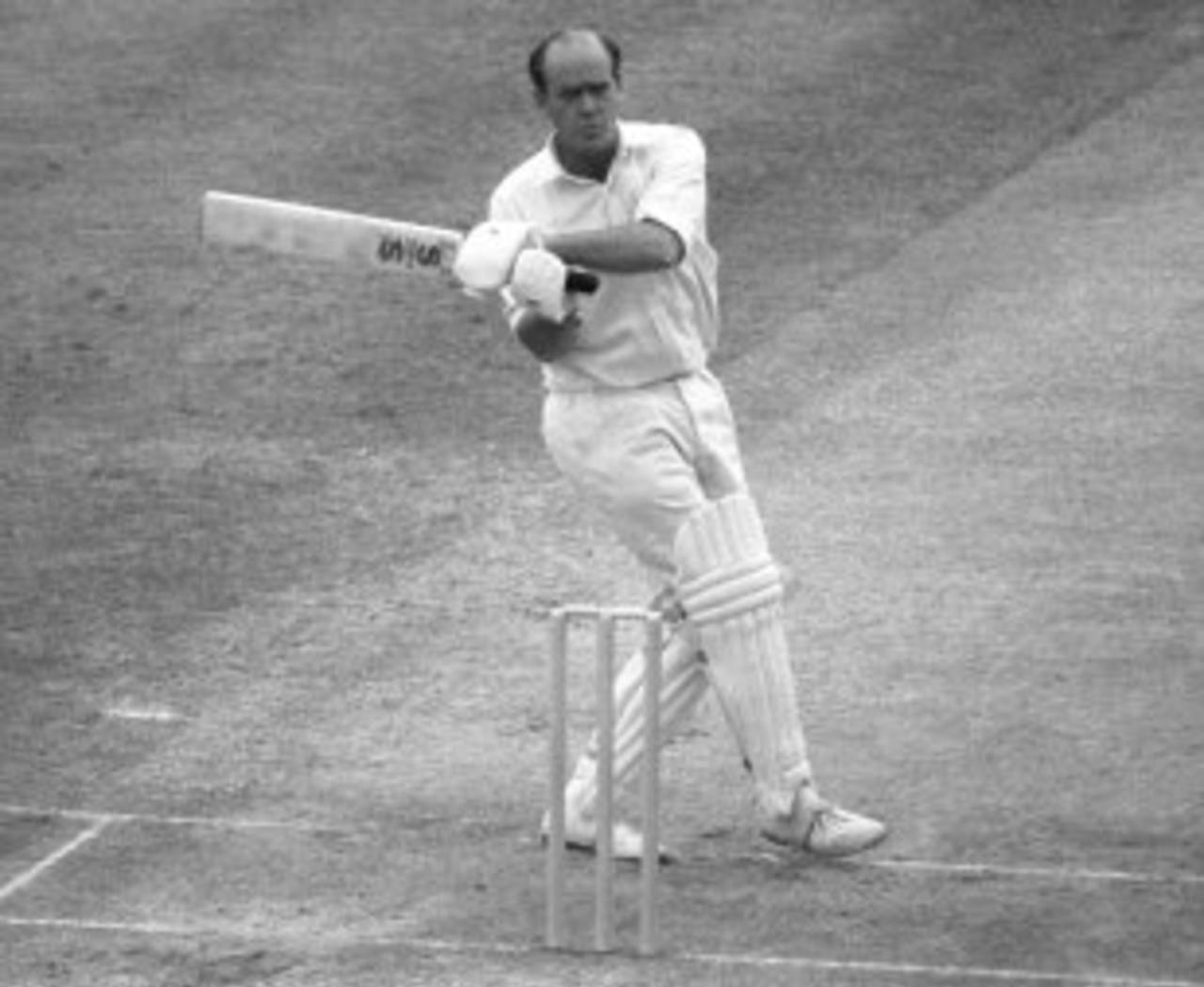The quickest thousands, and the fastest collapses
Also: Zimbabweans with two hundreds in a Test, longest wait between Test and one-day debuts, most wickets in the IPL, and Bradman's stats

Twenty-three years passed between Brian Close's Test and one-day debuts • PA Photos
As usual the starting point here is Don Bradman: he made a record 974 runs in the 1930 Ashes series against England, still the closest anyone has ever come to a thousand in a single series. But he never quite made 1000 in five straight matches. Only two batsmen have: in 1958 Garry Sobers scored 365 not out, 125 and 109 not out, and 14 and 27 at home against Pakistan, followed by 25 and 142 not out, and 4 and 198, in India - that's 1009 runs in five Tests. Graham Gooch followed suit in England in 1990, scoring 85 and 37, and 154 and 30 against New Zealand, before amassing 333 and 123, 116 and 7, and 85 and 88 against India - a record 1058 runs in the space of five Tests. Gooch remains the only man to score 1000 Test runs in an English summer (still 1058, actually, as he'd been out for a duck in the first Test against New Zealand).
Bangladesh's collapse in the first Test in Harare last week was the fourth time five wickets had fallen at the same score in a Test - but the first time the team involved wasn't New Zealand. In Wellington in 1945-46, in their first-ever Test against Australia, the Kiwis declined from 37 for 2 to 37 for 7 (on the way to 42 all out). Then, in Rawalpindi in 1964-65, New Zealand slipped from 59 for 4 to 59 for 9 against Pakistan (they had actually been 57 for 2 shortly before this). And most recently, in March 2012, South Africa sent New Zealand crashing from a prosperous 133 for 2 to 133 for 7 in the space of 20 balls after tea on the first day in Hamilton. The recent Bangladesh innings was, therefore, the first time the last five wickets in a Test innings had fallen without addition.
Brendan Taylor, who made 171 and 102 not out against Bangladesh in the match that has just finished in Harare, was the third Zimbabwean to score two centuries in the same Test. He followed the Flower brothers, who both achieved the feat: Grant made 104 and 151 against New Zealand in Harare in September 1997, while Andy amassed 142 and 199 not out in a remarkable solo effort against South Africa in Harare in September 2001. Slightly surprisingly, perhaps, no one has yet done it against Zimbabwe.
The leader in this esoteric list is Brian Close, who made his Test debut for England in 1949, 23 years before his first one-day international, against Australia in 1972. Next comes Garry Sobers, who made his Test debut for West Indies in 1953-54, more than 19 years before his solitary one-day international, in England in 1973. Close also holds the overall record for the longest gap between Test and ODI debuts: he's followed by another Englishman, Norman Gifford, who made his Test debut in June 1964 and played his first ODI in March 1985. Sobers is fifth on that particular list, also behind Bobby Simpson (Test debut 1957-58, first ODI 1977-78) and Fred Titmus (first Test 1955, ODI debut 1974-75). The record the other way round is held by Aminul Islam of Bangladesh, who played his first ODI in October 1988 and then appeared in Bangladesh's inaugural Test in November 2000. The longest gap not involving a new Test country is by Shaun Udal, who played his first ODI for England in May 1994 but had to wait till November 2005 for his Test debut.
No one has yet cracked the 100-wicket barrier in the Indian Premier League, and it looks rather unlikely that it will be breached this season now. As I write (after the match on April 22), Lasith Malinga leads the way with 86, followed by Amit Mishra with 85 and RP Singh next on 83. Following them are Piyush Chawla (76), Pragyan Ojha (74), Munaf Patel and Vinay Kumar (73). For an up-to-date list, click here.
Don Bradman played the last of his 52 Tests at The Oval in August 1948, famously being out for 0 when 4 would have given him a Test average of exactly 100. It's interesting to look back at the major records as they stood then. The Don was one of only ten players who had played 50 or more Tests - the runaway leader was England's Wally Hammond, with 85, ahead of two more Englishmen in Frank Woolley (64) and Jack Hobbs (61). Hammond had the most Test runs at that point, with 7249 - Bradman was second with 6996 (in fact he never held the overall Test-aggregate record at any stage of his career), and Hobbs third (5410). Only 24 players had scored more than 2000 Test runs by then. Bradman did lead the way for centuries (29, to Hammond's 22) and average (99.94, to George Headley's 65.78 at that point, for 1500 runs or more). By August 1948 the only bowler with more than 200 Test wickets was Clarrie Grimmett of Australia, with 216: England's Sydney Barnes was next with 189, and just 12 others had reached 100 (Maurice Tate, with 155, was the only other one past 150).
Steven Lynch is the editor of the Wisden Guide to International Cricket 2013